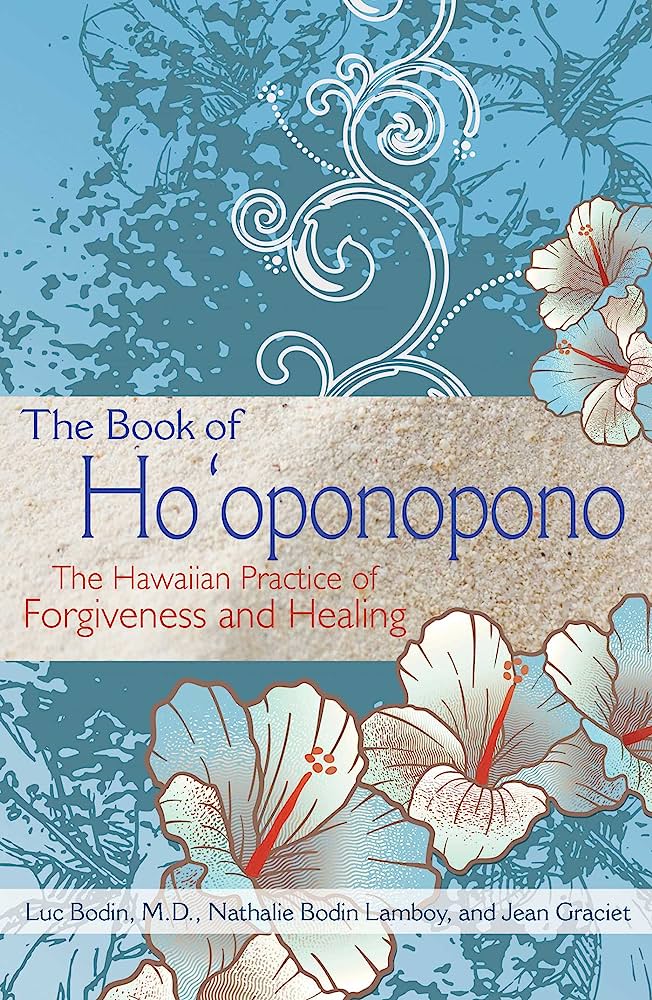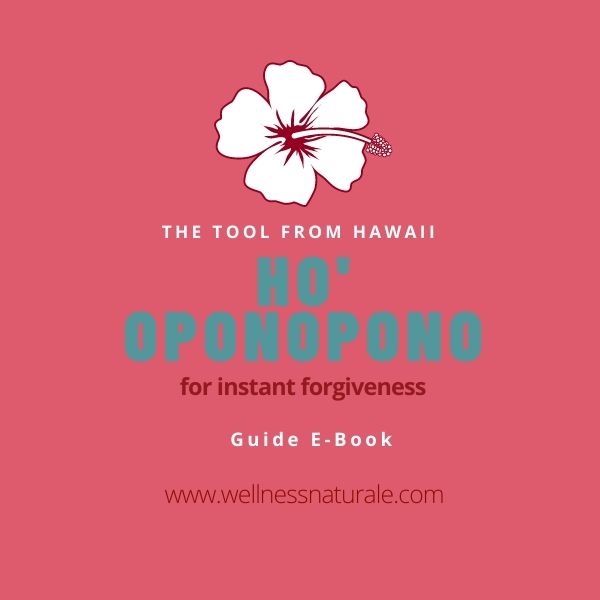Have you ever heard of Ho’oponopono? It’s a Hawaiian practice that focuses on forgiveness and healing. Now, you might be wondering, what does that have to do with the Law of Attraction? Well, in this guide, we’ll delve into the connection between Ho’oponopono and the Law of Attraction and how practicing both can bring positive changes into your life.
When it comes to the Law of Attraction, the belief is that you attract into your life what you focus on, whether it’s positive or negative. Ho’oponopono, on the other hand, is a practice of reconciliation and forgiveness that aims to release negative emotions and promote harmony. By practicing Ho’oponopono, you can clear your mind and energy of any limiting beliefs and negative vibrations, allowing space for the positive energy of the Law of Attraction to flow freely. In this article, we’ll explore the principles of Ho’oponopono and how it complements the Law of Attraction, providing you with a practical guide to incorporating both practices into your life for greater abundance and fulfillment. So, let’s dive in and discover how Ho’oponopono and the Law of Attraction can work together to manifest your dreams!

What is Ho’oponopono?
Ho’oponopono is a spiritual practice rooted in Hawaiian culture that focuses on forgiveness, reconciliation, and healing. The word itself can be broken down into two parts: “ho’o” meaning to make, and “ponopono” meaning right. Therefore, Ho’oponopono can be translated to “to make right.”
Origin and meaning of Ho’oponopono
Ho’oponopono has its origins in ancient Hawaiian traditions and is deeply rooted in the cultural heritage of the Hawaiian people. It was traditionally used as a method of conflict resolution within families and communities, aiming to restore harmony and balance. The practice involves acknowledging one’s own responsibility for any disharmony or problems and seeking forgiveness from others.
Ho’oponopono as a spiritual practice
Over time, Ho’oponopono has evolved into a spiritual practice that extends beyond its cultural origins. It is now recognized and practiced by individuals from various backgrounds and belief systems, who seek personal healing and transformation. Ho’oponopono is often considered a form of prayer and a way to connect with the divine.
Core Principles of Ho’oponopono
Taking responsibility for one’s actions
One of the fundamental principles of Ho’oponopono is taking full responsibility for one’s own actions, thoughts, and emotions. It emphasizes the belief that everything in our lives is a result of our perception and inner state. By acknowledging our role in creating disharmony or problems, we empower ourselves to make amends and seek resolution.
The power of forgiveness
Forgiveness is at the heart of Ho’oponopono. It recognizes that holding onto grudges, resentment, and negative emotions only perpetuates suffering and blocks personal growth. Ho’oponopono teaches individuals to embrace forgiveness as a transformative act that not only benefits the person being forgiven but also brings inner peace and healing to the one doing the forgiving.
Letting go of resentment and negative emotions
Ho’oponopono encourages individuals to release any resentment or negative emotions they may be carrying. It teaches that holding onto these emotions only hinders personal growth and prevents the manifestation of positive outcomes. By letting go of negative emotions, individuals create space for healing, reconciliation, and the attraction of abundance and love into their lives.

The Four Phrases of Ho’oponopono
I’m sorry
The phrase “I’m sorry” is a powerful acknowledgment of taking responsibility for one’s actions and accepting any wrongdoing. It is an expression of humility and a genuine desire to make things right.
Please forgive me
“Please forgive me” is an earnest plea for forgiveness from oneself or others. It is an acknowledgment of the pain or harm that has been caused and a genuine intention to seek reconciliation and healing.
Thank you
Expressing gratitude is an integral part of Ho’oponopono. “Thank you” serves as a reminder to appreciate the lessons learned, the growth experienced, and the opportunities for healing and transformation that arise from challenging situations.
I love you
The phrase “I love you” is a powerful affirmation of love and compassion. It serves as a reminder to cultivate unconditional love for oneself and others, recognizing that love is the ultimate healing force.
Ho’oponopono Techniques
Meditation and visualization
Meditation and visualization are commonly used techniques in Ho’oponopono. By quieting the mind and connecting with the divine, individuals can gain clarity, release negative emotions, and open themselves up to healing and reconciliation.
Writing letters to yourself/others
Writing letters is another powerful technique used in Ho’oponopono. This practice involves writing a letter expressing forgiveness, gratitude, or love to oneself or others. It allows for the release of emotions and serves as a tangible reminder of the healing journey.
Using Ho’oponopono in daily life
Ho’oponopono is not limited to specific techniques or rituals but can be integrated into daily life. By consciously practicing the four phrases of Ho’oponopono in everyday situations, individuals can cultivate forgiveness, gratitude, and love in their interactions with others and themselves.

Benefits of Practicing Ho’oponopono
Emotional healing and inner peace
One of the primary benefits of practicing Ho’oponopono is emotional healing and the cultivation of inner peace. By releasing negative emotions and embracing forgiveness, individuals can experience a profound sense of liberation and balance within themselves.
Improved relationships and communication
Ho’oponopono has the potential to greatly improve relationships and communication. By taking responsibility for one’s actions, seeking forgiveness, and expressing love and gratitude, individuals can create a positive and harmonious dynamic in their relationships.
Reduced stress and anxiety
Ho’oponopono can help reduce stress and anxiety by allowing individuals to let go of the burden of past grievances and negative emotions. By practicing forgiveness and releasing attachment to outcomes, individuals can experience a greater sense of ease and surrender to the present moment.
Ho’oponopono and Self-Transformation
Releasing limiting beliefs and patterns
Ho’oponopono offers a powerful tool for releasing limiting beliefs and patterns that hold individuals back from their true potential. By acknowledging one’s role in creating these beliefs and patterns, individuals can engage in the process of transformation and create new, empowering narratives for themselves.
Aligning with the Law of Attraction
The Law of Attraction states that our thoughts, emotions, and beliefs shape our reality. Ho’oponopono aligns with this principle by emphasizing the importance of cultivating positive thoughts, emotions, and beliefs. By consciously practicing forgiveness and unconditional love, individuals can attract positive experiences and manifest their desired outcomes.
Manifesting desired outcomes
Ho’oponopono teaches that by releasing negative emotions, cultivating forgiveness, and embracing love and gratitude, individuals can shift their energy and vibration. This shift can lead to the manifestation of desired outcomes, as they become more aligned with their true desires and intentions.

Ho’oponopono and Forgiveness
Understanding the healing power of forgiveness
Forgiveness is a central theme in Ho’oponopono, and its healing power is widely recognized. It allows individuals to free themselves from the emotional burden of past grievances, enabling them to move forward with a renewed sense of inner peace and clarity.
Letting go of grudges and resentment
Ho’oponopono emphasizes the importance of letting go of grudges and resentment. It recognizes that holding onto these negative emotions not only harms individuals mentally and emotionally but also blocks the flow of positive energy and abundance in their lives.
Reconciling with oneself and others
Through the practice of forgiveness, Ho’oponopono offers individuals the opportunity to reconcile with themselves and others. It facilitates the healing of fractured relationships and promotes a sense of unity, understanding, and compassion.
Cultural Context of Ho’oponopono
Traditional Hawaiian perspective
Ho’oponopono has deep roots in traditional Hawaiian culture and should be approached with respect and reverence for its cultural significance. It is essential to acknowledge that the practice has evolved beyond its cultural origins and is now practiced by individuals from different backgrounds.
Respecting and honoring indigenous practices
When practicing Ho’oponopono, it is important to respect and honor indigenous practices and teachings. This includes seeking proper guidance, recognizing the cultural protocols associated with the practice, and approaching it with humility and gratitude.

Ho’oponopono in Modern Society
Integration with contemporary personal growth approaches
Ho’oponopono has gained popularity in modern society due to its profound healing and transformative potential. It can be integrated with various personal growth approaches, including mindfulness, meditation, and positive psychology, to enhance overall well-being and self-awareness.
Scientific research on its effectiveness
Despite being rooted in ancient traditions, Ho’oponopono has also garnered interest from the scientific community. Research on its effectiveness is still in its early stages, but preliminary studies have shown promising results in terms of emotional healing, stress reduction, and improved interpersonal relationships.
Critics and Controversies Surrounding Ho’oponopono
Cultural appropriation concerns
As Ho’oponopono has gained popularity outside of its traditional context, concerns about cultural appropriation have arisen. It is crucial to approach the practice with cultural sensitivity and respect for its origins, recognizing that its adoption by different cultures should not diminish or dilute its significance.
Misinterpretation and simplification
Ho’oponopono is a complex and nuanced practice that can often be oversimplified or misinterpreted. It is essential to approach the practice with a willingness to learn, engage in proper research, and seek guidance from knowledgeable sources to ensure a deep and meaningful understanding.
Discussions on its spiritual legitimacy
Ho’oponopono has become a topic of debate among spiritual practitioners and scholars, questioning its spiritual legitimacy outside of its cultural context. These discussions highlight the importance of approaching the practice with integrity, respect, and an open mind.
Practicing Ho’oponopono Ethically
Obtaining proper guidance and understanding
To practice Ho’oponopono ethically, it is crucial to seek proper guidance and understanding. This can involve studying the traditional teachings, engaging with experts in the field, and acknowledging the cultural protocols and practices associated with the tradition.
Respecting cultural protocols and traditions
Respecting cultural protocols and traditions is of utmost importance when engaging in Ho’oponopono. This includes acknowledging and honoring the cultural origins of the practice, being mindful of appropriate cultural practices, and ensuring that the practice is approached with integrity and respect.
Integrating with personal values and beliefs
While Ho’oponopono has its cultural and spiritual roots, it can be practiced by individuals from various backgrounds and belief systems. It is essential to integrate the practice with one’s personal values and beliefs, ensuring that it aligns with one’s own spiritual journey and ethical framework.
Steps to Begin Your Ho’oponopono Practice
Researching and learning about Ho’oponopono
Before diving into practicing Ho’oponopono, it is crucial to research and learn about its principles, techniques, and cultural context. This can involve reading books, attending workshops or seminars, and engaging with reputable sources of information.
Finding a suitable mentor or teacher
Finding a suitable mentor or teacher can greatly enhance the Ho’oponopono learning experience. A mentor or teacher can provide guidance, support, and ensure that the practice is approached with cultural sensitivity and authenticity.
Creating a dedicated practice space
Creating a dedicated practice space is essential for cultivating a consistent Ho’oponopono practice. This space can be a physical area in your home or a designated mental space where you can retreat and engage in the practice with focus and intention.
Maintaining Consistency in Ho’oponopono
Establishing daily or regular practice routines
Maintaining consistency in Ho’oponopono involves establishing daily or regular practice routines. This can include dedicating specific times of the day for practice, setting reminders, and creating rituals that support your engagement with the practice.
Tracking progress and reflecting on outcomes
Tracking progress and reflecting on outcomes can provide valuable insights into the effects of your Ho’oponopono practice. Keeping a journal or recording your experiences can help you identify patterns, areas of growth, and areas that may require further attention.
Staying motivated and committed
Staying motivated and committed to your Ho’oponopono practice requires dedication and discipline. Remembering the transformative potential of the practice, staying connected to its core principles, and celebrating the small victories can help sustain your motivation along the journey.
Conclusion
The transformative potential of Ho’oponopono
Ho’oponopono offers a transformative path towards healing, reconciliation, and personal growth. By embracing forgiveness, taking responsibility for our actions, and cultivating love and gratitude, we can experience profound shifts in our lives.
Embracing forgiveness and self-love for personal growth
Through Ho’oponopono, we have the opportunity to embrace forgiveness and self-love as catalysts for personal growth. By releasing negative emotions, letting go of grudges, and acknowledging our interconnectedness, we can create a life rooted in peace, harmony, and abundance.
Continuing the journey of healing and reconciliation
The journey of Ho’oponopono is an ongoing process that requires commitment, self-reflection, and a willingness to evolve. By continuously engaging in the practice, we can experience deep healing, reconcile with ourselves and others, and cultivate a life filled with love, forgiveness, and inner peace.
As you embark on your Ho’oponopono journey, remember to approach the practice with reverence, cultural sensitivity, and an open heart. May this guide serve as a valuable resource in your exploration of Ho’oponopono and its transformative potential.
